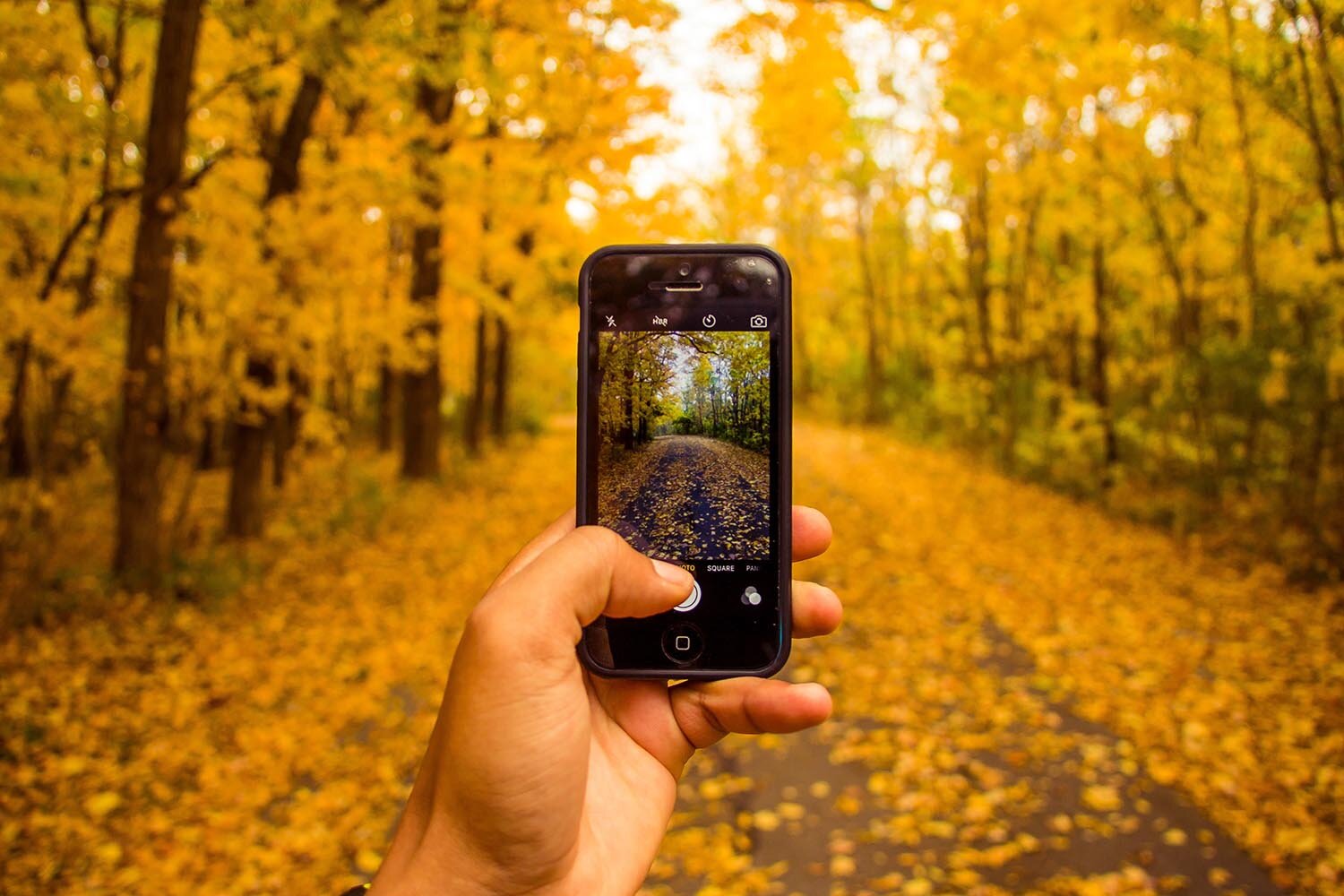Fall can be a wonderful time of year. Not too hot, not too cold, and changing colors from one week to the next make it worth photographing for posterity. But how can you make sure you’re taking great fall shots?
There’s no magic formula for taking great fall shots. You just have to make the colors and textures that make this season special work for you. So, here’s how to take great fall shots with your smartphone.
Shoot at dawn or dusk to bring out the fall colors
When it comes to fall, not all times of day are the same. Although you can take great shots in any lighting condition, shooting at dawn or dusk will bring out the season’s natural colors in your photo. This is due to the light and the angle it casts on the fall colors.
The first shot above, with the sun streaming through the trees, was shot at dawn. The park was empty, and the scene had an ethereal quality that wouldn’t have happened in the middle of the day. The second scene was shot at dusk, right when the street lights were on, making the fallen leaves glow.
Look for abundant color contrast during fall
Fall is all about abundant colors in nature. Trees and plants are dying to survive winter and survive until spring. And if you can find contrast with the fall colors, you’ll have a great shot on your hands. Water, buildings, artificial objects, and even gray roads can work.
In the photo above, the trees are in varying degrees of decay, which adds interest even before anything else comes into the scene. Add the lake behind to bring a blue hue to the scene, and then the unnatural colors of the boathouse in the background.
Shoot seasonal objects in close-up
Given the beauty of nature this time of year, it’s easy to get caught up in shooting scenes from a distance. However, it’s also beneficial to get up close and personal with some fall objects. This makes the colors and textures really pop, filling your screen with fall colors.
While I chose leaves in the shot above simply because they were my focus for this shoot, you can choose any of many seasonal objects to shoot close-ups of. Pumpkins, pine cones, fireplaces, or even someone holding a cup of steaming hot chocolate.
Use natural frames to add focus to your fall shots
Since shooting in the fall is all about shooting outside to capture amazing colors, you should try to use as natural a frame as possible. This will enable you to add structure to a shot that has a lot going on and nowhere obvious for the viewer to focus their eyes. And I recommend using grid lines to help you find the frame (among other things).
As you can see above, this shot of a local park could have been a jumbled mix of colors and shapes, with nothing holding them in place or providing context. However, by shooting through these two trees, which create a natural frame for what’s behind them, the whole scene suddenly starts to make more sense.
Shoot when the weather is wet or foggy to add more atmosphere
As lovely as fall can be in terms of colors, and the opportunities it brings for textured photos, it also signals a change in the seasons. However, budding smartphone photographers should look at this as an opportunity to take more interesting shots.
Wet weather or fog can create an atmosphere that warm and sunny weather doesn’t. So use the changing weather conditions to your advantage. A foggy night with leaves on the ground can instantly add atmosphere. Rain can, too, whether it’s falling at the time, or has already soaked the ground.
I took the two shots above right after a rain. In the first, the ground is completely soaked, making everything shine as if it’s been painted. And in the second, the puddle provides a beautiful fuzzy tree reflection.
Bend down to capture fallen leaves on the ground
With fallen leaves everywhere, you can make them a feature of your autumn shots. And doing this means bending down to the ground, so they fill the foreground of your shots.
Don’t think of these fallen leaves as background noise that only adds texture and color; they can be the main subject of your photo. And if shot well, the viewer can imagine kicking them like they did when they were a child.
For the sake of demonstration, the shot above doesn’t actually have a subject, as it’s simply an obscure piece of ground with a few trees and a streetlight. But by filling half the frame with fallen leaves, it suddenly becomes an interesting photo.
